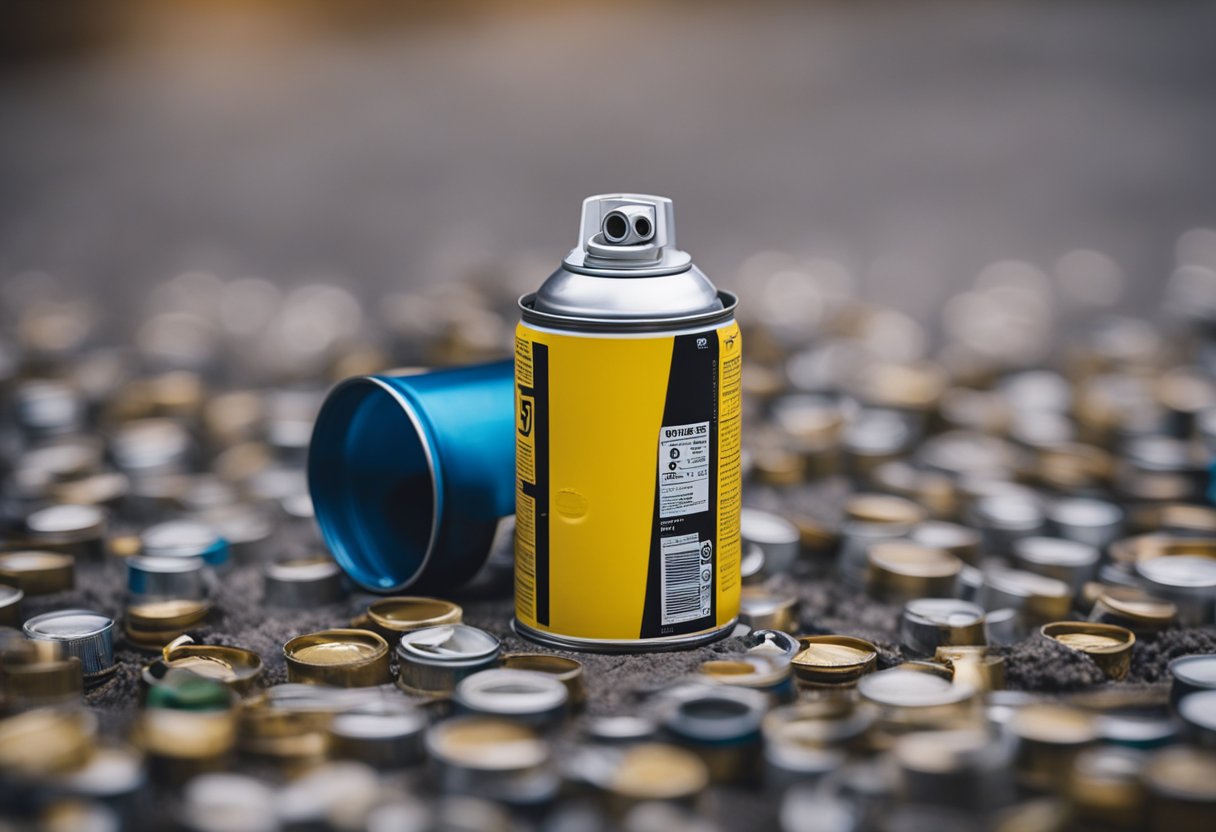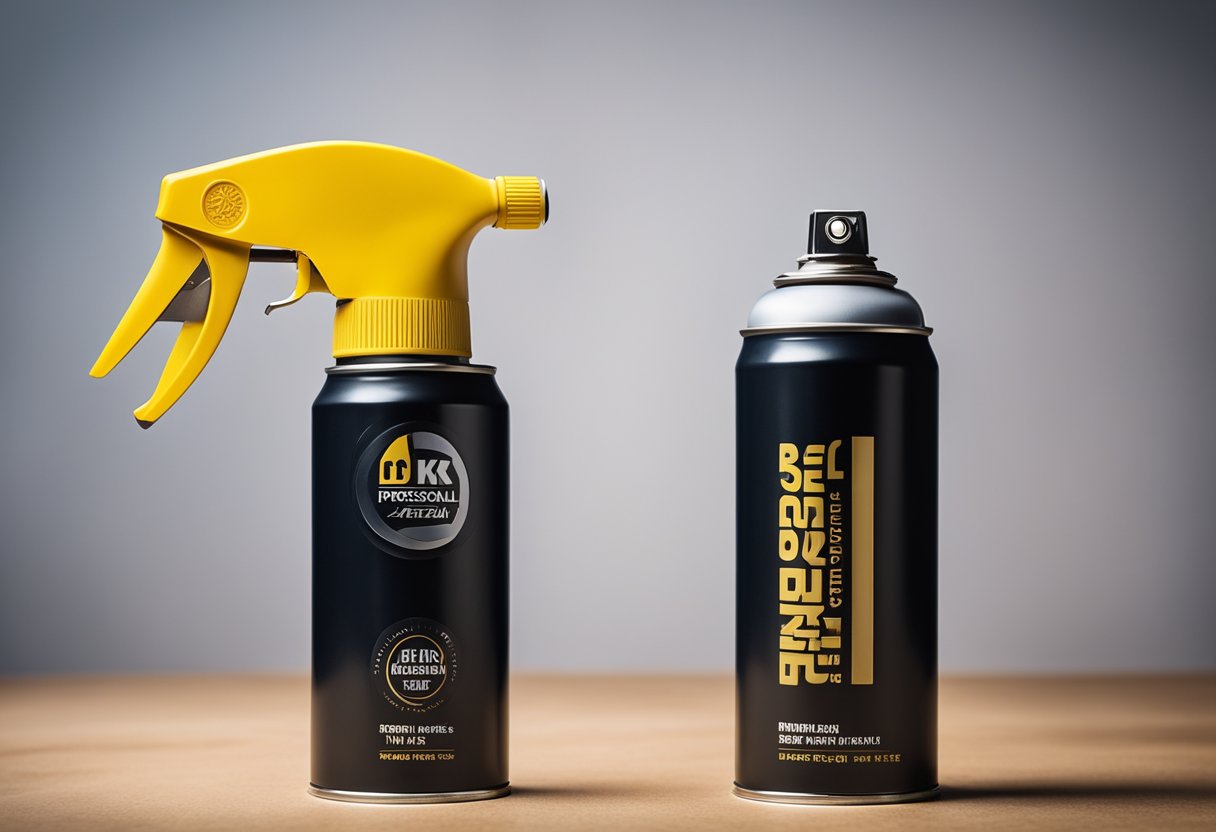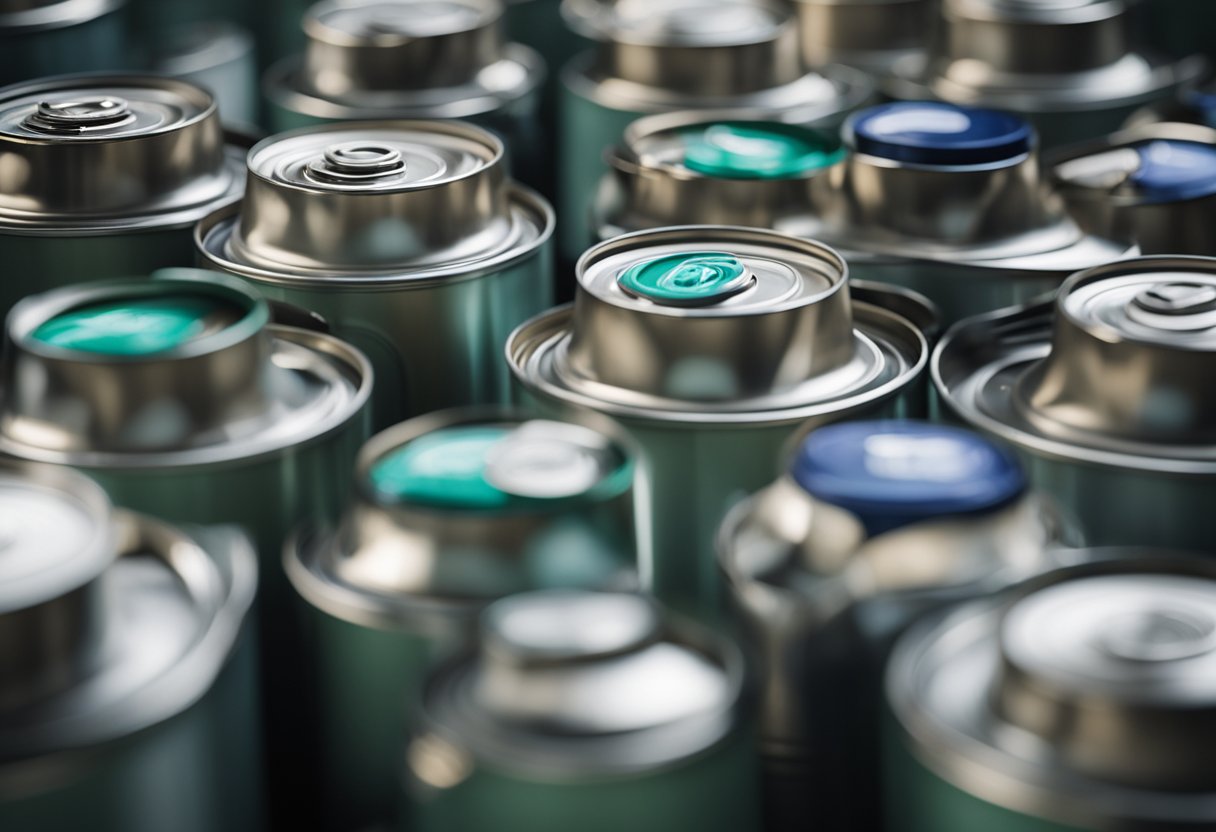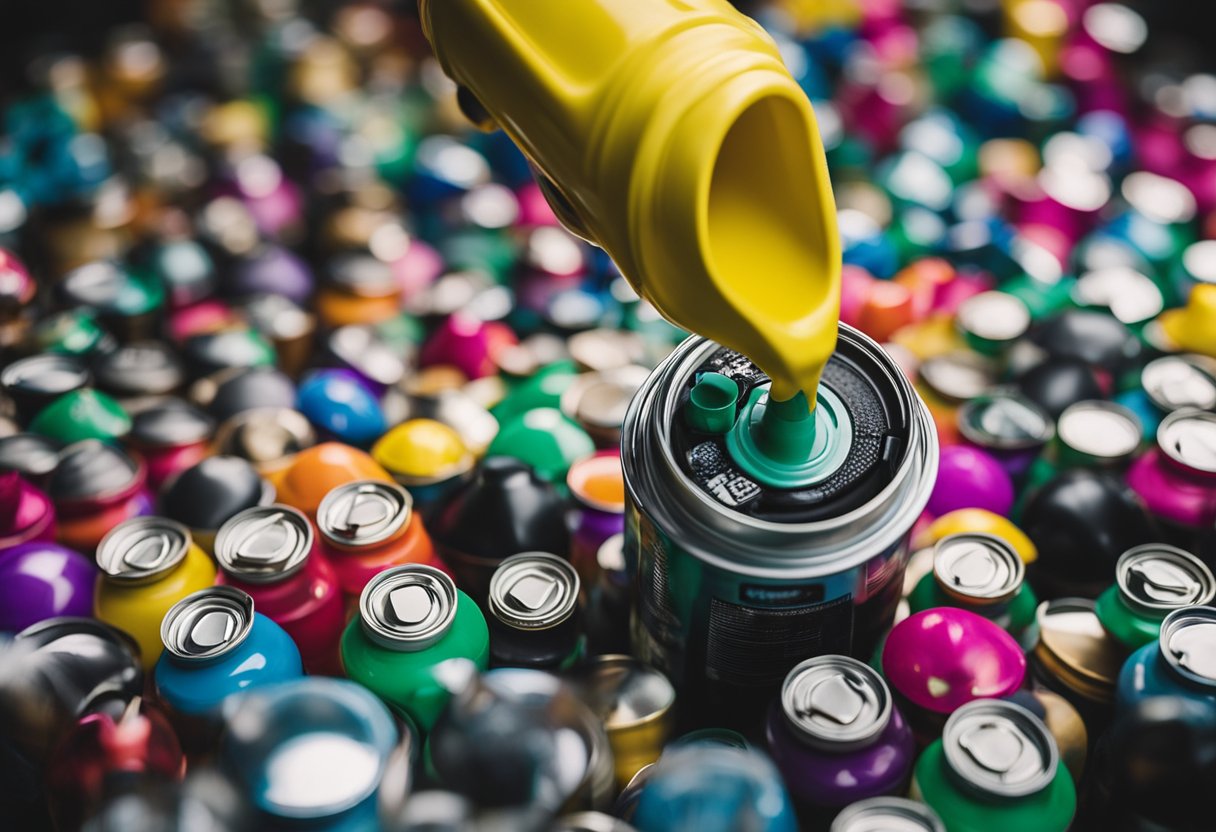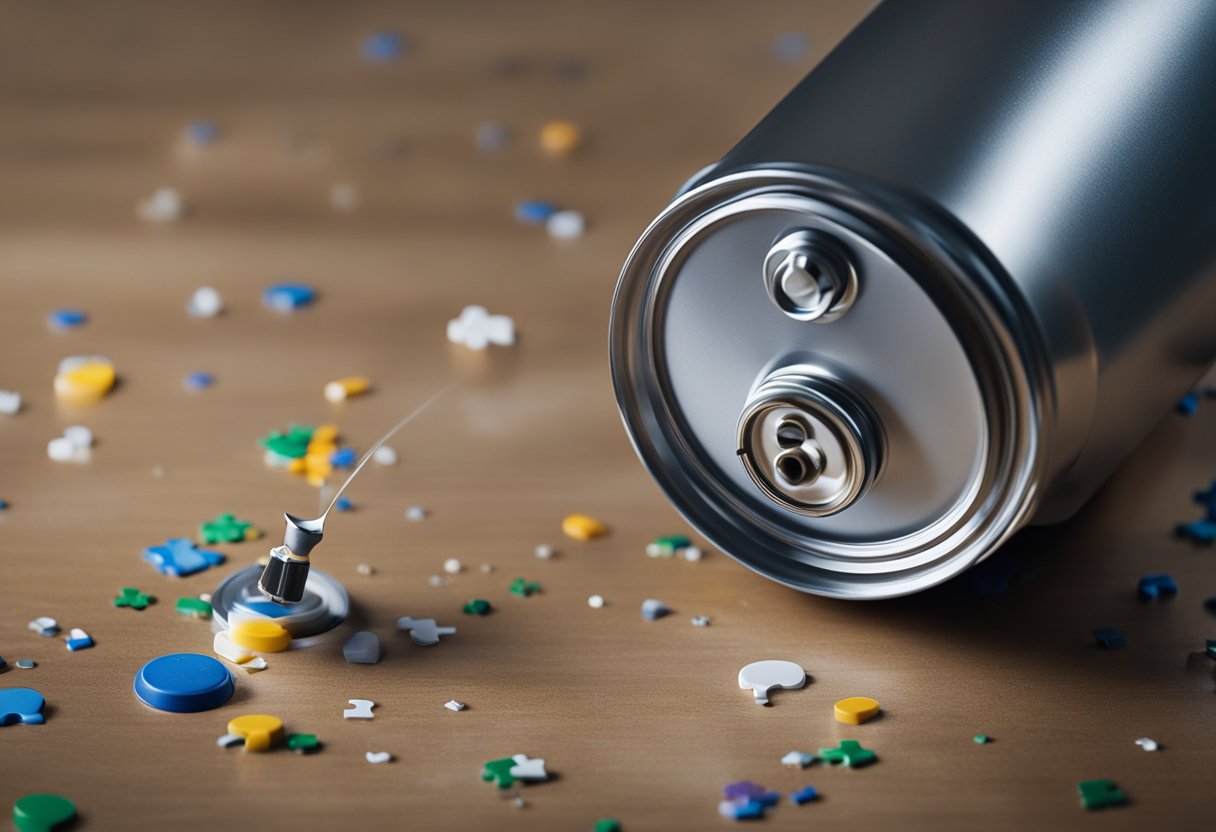I have experienced the frustration of buying a brand new spray paint can only to find out that it won’t spray. This can be a common issue for many people who use spray paint cans, whether for DIY projects or professional work. Understanding the problem and the causes of spray paint can issues can help you prevent them from happening in the future.
One of the main causes of spray paint can issues is a clogged nozzle. This can happen if the can is not stored properly or if the nozzle is not cleaned after use. Another cause can be a lack of pressure in the can, which can happen if the can is not shaken enough before use or if it is stored in extreme temperatures. By knowing these causes, you can take steps to prevent them from happening and ensure that your spray paint cans work properly when you need them.
Key Takeaways
- Clogged nozzles and lack of pressure are common causes of spray paint can issues.
- Proper storage and cleaning can prevent these issues from occurring.
- Choosing the right spray paint can for your project can also help prevent issues.
Understanding the Problem
https://www.youtube.com/watch?v=yiEp5TGR_po&embed=true
As someone who has used brand new spray paint cans, I know how frustrating it can be when the can won’t spray. There are several reasons why this can happen, and it’s essential to understand the problem to fix it.
One common reason why a brand new spray paint can won’t spray is because of a clogged nozzle. This can happen when the can is not used correctly, or when it’s stored improperly. It’s essential to shake the can well before using it to ensure that the paint is mixed correctly. If the nozzle is clogged, try removing it and cleaning it with warm water.
Another reason why a brand new spray paint can won’t spray is because of blockages in the can itself. This can happen when the paint dries up inside the can, or when the can is stored in a cold environment. To fix this, try warming up the can by placing it in warm water for a few minutes. This will help to loosen up the paint and make it easier to spray.
It’s also important to check the pressure of the can. If the can is not pressurized correctly, it won’t spray correctly. To check the pressure, press down on the nozzle and listen for a hissing sound. If there is no hissing sound, the can is not pressurized correctly, and you will need to puncture the can with a sharp object to release the pressure.
In conclusion, there are several reasons why a brand new spray paint can won’t spray. It’s essential to understand the problem and take the necessary steps to fix it. By following the tips mentioned above, you should be able to fix the problem and get back to your painting project in no time.
Causes of Spray Paint Can Issues
https://www.youtube.com/watch?v=oYBhXULQlMo&embed=true
When it comes to using spray paint cans, there are a few common issues that can arise. As someone who has used spray paint cans extensively, I have encountered these issues and have researched the causes behind them. Here are some of the most common causes of spray paint can issues:
Clogging
One of the most common issues with spray paint cans is clogging. Clogging occurs when the nozzle of the can becomes blocked with dry paint or debris. This can happen if the can is not shaken properly before use or if it is not used frequently enough. To prevent clogging, it is important to shake the can thoroughly before use and to use it frequently enough to prevent the paint from drying in the nozzle.
Pressure Buildup
Another common issue with spray paint cans is pressure buildup. Pressure buildup occurs when the pressure inside the can becomes too high, which can cause the can to stop spraying. This can happen if the can is left in a hot environment, such as a car on a sunny day, or if it is punctured or damaged in some way. To prevent pressure buildup, it is important to store spray paint cans in a cool, dry place and to handle them carefully.
Excess Paint
Sometimes, spray paint cans can stop spraying because there is simply too much paint in the can. This can happen if the can is overfilled or if the paint is too thick. To prevent this issue, it is important to use the right type of paint for the job and to follow the instructions on the can carefully.
Dry Paint
Dry paint can also cause issues with spray paint cans. This can happen if the paint in the can is old or if the can has been stored improperly. To prevent this issue, it is important to use fresh paint and to store spray paint cans in a cool, dry place.
Propellant
The propellant in spray paint cans can also cause issues. If there is not enough propellant in the can, the paint may not spray properly. This can happen if the can is old or if it has been stored improperly. To prevent this issue, it is important to use fresh paint and to store spray paint cans in a cool, dry place.
Quality
Finally, the quality of the spray paint can itself can also cause issues. If the can is low quality or if it has been damaged in some way, it may not spray properly. To prevent this issue, it is important to use high-quality spray paint cans from reputable brands.
In conclusion, there are several common causes of spray paint can issues, including clogging, pressure buildup, excess paint, dry paint, propellant, and quality. By understanding these causes and taking the necessary precautions, you can prevent these issues and ensure that your spray paint cans work properly every time.
Prevention Tips
https://www.youtube.com/watch?v=QnohvTM5xG4&embed=true
When it comes to spray painting, prevention is always better than cure. Here are some tips to prevent your brand new spray paint can from not spraying:
-
Shake the can well: Before using the spray paint can, shake it well for at least a minute. This will help to mix the paint and the propellant, ensuring that the paint comes out smoothly.
-
Hold the can upside down: If the spray paint can is not used for a while, the paint may settle at the bottom of the can. To prevent this, hold the can upside down and spray for a few seconds before using it. This will help to clear the nozzle and ensure that the paint comes out smoothly.
-
Spray in thin coats: Spraying in thin coats will help to prevent clogging of the nozzle. It will also help the paint to dry faster and prevent drips.
-
Use in a well-ventilated area: Always use spray paint in a well-ventilated area to prevent inhaling harmful fumes. This will also help the paint to dry faster.
-
Clean the nozzle after use: After using the spray paint can, clean the nozzle by wiping it with a clean cloth. This will prevent the paint from drying and clogging the nozzle.
By following these simple tips and tricks, you can prevent your brand new spray paint can from not spraying. Remember to always use spray paint in a well-ventilated area and to shake the can well before use.
Common Solutions to Unclog Spray Paint Cans
https://www.youtube.com/watch?v=dSTIAwiW-HA&embed=true
As a professional painter, I have encountered several instances where a brand new spray paint can won’t spray. This can be frustrating, especially when you have a project to complete. Fortunately, there are several common solutions to unclog spray paint cans that you can try before giving up on the can.
One of the most common solutions is to clean the nozzle of the spray paint can. This is because dried paint chunks in the nozzle can prevent it from expelling paint properly. To clean the nozzle, you can use a thin pin or needle to poke through the nozzle opening and remove any dried paint that may be blocking the spray. Alternatively, you can use paper to wipe the nozzle, or clean it with hot water.
Another solution is to use a lubricant. Lubricants such as WD-40 or aerosol lubricant can help to loosen up any dried paint and make it easier to unclog the spray paint can. Simply spray the lubricant into the nozzle and let it sit for a few minutes before attempting to spray the paint again.
If the above methods do not work, you can try using paint thinner, acetone, mineral spirits, rubbing alcohol, or vinegar to unclog the spray paint can. These substances can help to dissolve any dried paint and unclog the nozzle. However, it is important to use these substances in a well-ventilated area and wear protective gloves to avoid skin irritation.
In conclusion, there are several common solutions to unblock a spray paint can that won’t spray. These solutions include cleaning the nozzle, using a lubricant, and using paint thinner, acetone, mineral spirits, rubbing alcohol, or vinegar. By trying these solutions, you can save time and money by fixing the spray paint can instead of throwing it away.
Advanced Techniques for Unclogging
When all else fails, there are a few advanced techniques that can be used to unclog a brand new spray paint can that won’t spray.
Softened Matter
If the clog is caused by softened matter, such as dried paint, a sewing needle can be used to clear the blockage. Carefully insert the needle into the nozzle and wiggle it around to break up the clog. Be sure to clean the needle with a cloth after each use to prevent any debris from getting into the paint.
Chemicals
There are a variety of chemicals that can be used to unclog a spray paint can. Rust-Oleum’s “Spray Paint Can Gun Cleaner” is a popular choice. Simply attach the can to the nozzle and spray for a few seconds. This should clear any blockages in the valve.
Compressed Air
Using compressed air is another effective way to unclog a spray paint can. Attach a straw to the nozzle and blow compressed air into the can. This should clear any blockages in the valve.
Sandpaper
If the nozzle is clogged with dried paint, sandpaper can be used to remove the blockage. Gently sand the nozzle with fine-grit sandpaper until the dried paint is removed. Be careful not to sand too aggressively, as this could damage the nozzle.
Separation
If the paint and propellant have separated, the can may need to be shaken more vigorously to mix the two substances. If shaking does not work, try gently tapping the bottom of the can on a hard surface to mix the paint and propellant.
Repair
If none of these techniques work, the can may be beyond repair and will need to be replaced. In the future, be sure to store spray paint cans in a cool, dry place to prevent clogging.
By using these advanced techniques, you can unclog a brand new spray paint can that won’t spray and get back to your project in no time.
Alternative Solutions
https://www.youtube.com/watch?v=EDJmiHDi8cs&embed=true
If your brand new spray paint can won’t spray, there are a few alternative solutions you can try before giving up on it. Here are some of the most effective ones:
1. Use a Spare Nozzle
Sometimes, the nozzle that comes with the spray paint can is faulty or clogged. In that case, you can try using a spare nozzle if you have one. Most spray paint cans come with a spare nozzle, so check the packaging or the bottom of the can to see if there is one available.
2. Clean the Nozzle
If the nozzle is clogged, you can try cleaning it with a toothbrush or a paper towel. First, remove the nozzle from the can and soak it in warm water for a few minutes. Then, use a toothbrush or a paper towel to remove any paint or debris that may be clogging the nozzle. Once you’ve cleaned the nozzle, reattach it to the can and try spraying again.
3. Unclog the Valve
If the nozzle is not clogged but the can still won’t spray, the valve may be clogged instead. To unclog the valve, hold the can upside down and spray for a few seconds. This will clear any blockages in the valve and allow the paint to flow freely again.
4. Switch to a Different Paint
If you’ve tried all of the above solutions and the can still won’t spray, it may be a problem with the paint itself. Try switching to a different brand or type of paint, such as acrylic paint, to see if that solves the issue.
5. Check the Propellant
Finally, if none of the above solutions work, the problem may be with the propellant in the can. Make sure the can is stored in a dry, cool place, such as a garage, and that it hasn’t been exposed to extreme temperatures. If the propellant is faulty, you may need to return the can to the store for a replacement.
By trying these alternative solutions, you can avoid wasting a brand new spray paint can that won’t spray. Whether it’s using a spare nozzle, cleaning the nozzle, unclogging the valve, switching to a different paint, or checking the propellant, there are several options available to get your spray paint can working again.
Choosing the Right Spray Paint Can
As a spray paint enthusiast, I know how frustrating it can be to encounter a brand new spray paint can that won’t spray. However, before we dive into troubleshooting the issue, it’s important to choose the right spray paint can in the first place.
When it comes to spray paints, the brand you choose can make a big difference in the quality of the mist and the overall finish of your project. It’s important to choose a reputable brand that has a track record of producing high-quality spray paints.
Some of the most popular spray paint brands include Rust-Oleum, Krylon, and Montana. These brands are known for producing spray paints that have a consistent mist and are easy to use.
In addition to the brand, it’s also important to consider the type of spray paint you need. Different spray paints are designed for different surfaces and applications, so make sure you choose the right one for your project.
Lastly, it’s important to consider the quality of the aerosol can itself. Look for cans that are well-made and have a sturdy nozzle. Cheaper aerosol cans may be more prone to clogging or malfunctioning, so it’s worth investing in a higher-quality can.
By choosing the right spray paint can, you can minimize the risk of encountering issues like a brand new can that won’t spray.
Conclusion
In conclusion, a brand new spray paint can not spraying can be frustrating, but there are several reasons why this can happen. It could be due to a clogged nozzle, a defective valve, or the can being empty. To prevent this from happening, it is important to shake the can well before using it and to clean the nozzle after each use.
If the nozzle is clogged, there are several methods that can be used to unclog it, such as using a pin or needle to clear the blockage or soaking the nozzle in warm water. Additionally, if the valve is defective, it may be necessary to replace it with a new one.
It is important to note that spray paint cans can be affected by external factors such as temperature and humidity. If the can is exposed to extreme temperatures or humidity, it may not spray properly. In such cases, it is best to wait until the conditions improve before attempting to use the can again.
Overall, it is important to take proper care of spray paint cans to ensure they function properly. By following the tips and methods outlined in this article, users can avoid the frustration of a brand new spray paint can not spraying and achieve the desired results in their painting projects.
Frequently Asked Questions
How to unclog a spray paint can nozzle?
If your spray paint can nozzle is clogged, you can try cleaning it with a small pin or needle. Gently insert the pin or needle into the nozzle and wiggle it around to remove any dried paint or debris. You can also try soaking the nozzle in warm water or using a can of compressed air to blow out any clogs. Be sure to wear gloves and eye protection when working with spray paint cans.
What to do when a brand new spray paint can won’t spray?
If a brand new spray paint can won’t spray, it may be because the valve is clogged. You can try unclogging the valve by removing the nozzle and running it under hot water for a few minutes. Then, reattach the nozzle and shake the can vigorously for at least one minute. If the can still won’t spray, try pressing the nozzle down firmly and releasing it quickly several times to build up pressure inside the can. If none of these methods work, the can may be defective and you should contact the manufacturer for a replacement.
How to fix an aerosol can that lost pressure?
If your aerosol can has lost pressure, it may be because it is too cold. Try warming up the can by placing it in a warm water bath for a few minutes. You can also try shaking the can vigorously for at least one minute to build up pressure inside. If the can still won’t spray, it may be because the valve is clogged or the can is defective. See the previous questions for tips on unclogging the valve or contacting the manufacturer for a replacement.
How to make an aerosol can spray?
To make an aerosol can spray, shake the can vigorously for at least one minute to mix the paint or other contents. Then, hold the can upright and press down on the nozzle to release the spray. Be sure to hold the can at least six inches away from the surface you are spraying and use even, sweeping motions to achieve a smooth, even coat.
Why do aerosol cans stop spraying?
Aerosol cans can stop spraying for a variety of reasons, including clogged nozzles, low pressure, and defective valves. See the previous questions for tips on unclogging the nozzle or increasing pressure, and contact the manufacturer for a replacement if the can is defective.
How to fix an aerosol can with a broken nozzle?
If your aerosol can has a broken nozzle, you can try replacing it with a new one. Simply twist off the old nozzle and twist on the new one. You can purchase replacement nozzles at most hardware or home improvement stores. Be sure to wear gloves and eye protection when working with spray paint cans.

Hi, I’m Sal Muller of Tooltrip.com. My DIY experience led me to understand essential power tools for home projects. Tooltrip.com guides enthusiasts and professionals in choosing right tools for any job. I provide concise top tool reviews for easier, efficient DIY.

